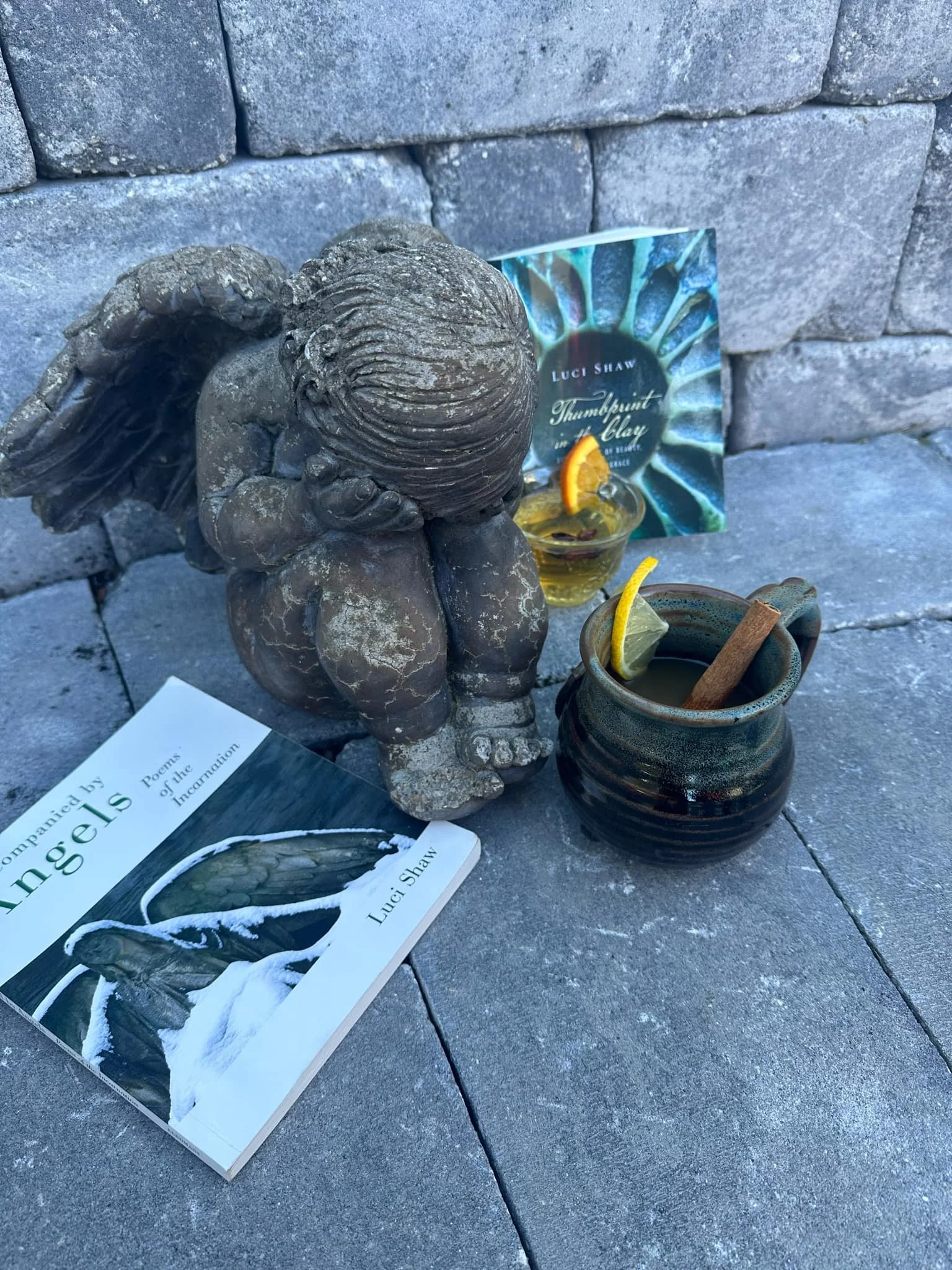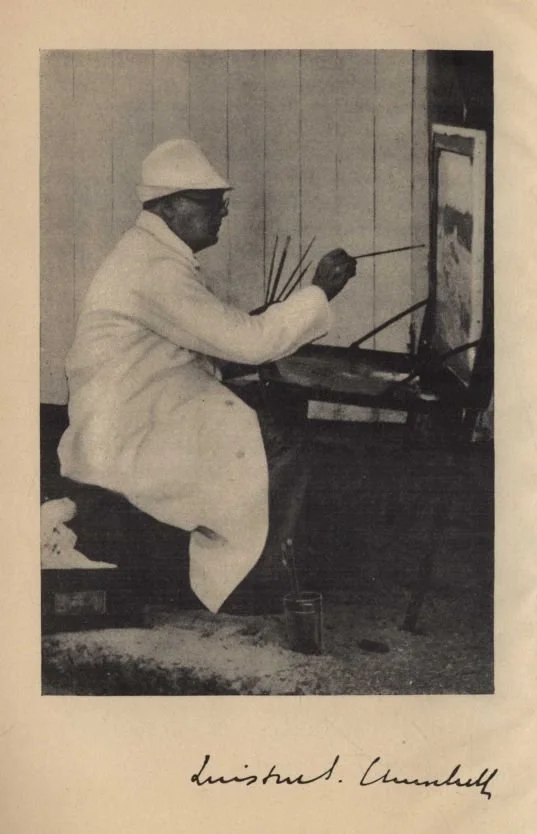Recipes and Recommendations for Imbibing Beauty through Books and Beverages
By Annie Nardone
Pages, Pints, and Pours rings in the season of yuletide feasting with a medieval tale of Arthur, a noble knight of the Round Table, and an unexpected guest wielding holly and an ax.
THE PAGES: SIR GAWAIN AND THE GREEN KNIGHT BY J.R.R. TOLKIEN
“This king lay at Camelot at Christmas-tide
With many a lovely lord, lieges most noble,
Indeed of the Table Round all those tried brethren
Amid merriment unmatched and mirth without care.”
—J. R. R. Tolkien, Sir Gawain and the Green Knight
As a humanities teacher, I believe that the Arthurian tales are an essential text to understanding the development of the English language, and also provide inspiration for art, films, and authors. The legendarium used to be included in most high school English classes, usually the Sir Thomas Malory or Howard Pyle translations; however, like Boethius and Dante, the great stories are no longer standards in education. And nearly 600 pages of slightly archaic language are beautiful but require a bit of patience, so they are not a top choice for the casual reader.
Sir Gawain and the Green Knight is a grand way to enter King Arthur’s world. Sir Gawain was written circa AD 1,400 by an anonymous author who was a contemporary of Chaucer. J. R. R. Tolkien describes the Galahad’s author as “a man of serious and devout mind, though not without humour; he had an interest in theology, and some knowledge of it, though an amateur knowledge.” Tolkien adds that the medieval author wrote in “ancient English measure which had descended from antiquity, that kind of verse which is now called ‘alliterative’.” Tolkien’s poetic translation keeps with the original author’s intent, to “preserve the metres, which are essential to the poems as wholes . . .as they were for the people to whom they were addressed.”
We begin the story during Christmas-tide feasting and celebration in Camelot. King Arthur and Queen Guinevere are the magnanimous hosts to the revelry, but Arthur refuses to eat until someone shares a story of adventure or challenges him to a game. Suddenly, “there passed through the portals a perilous horseman, the mightiest on middle-earth . . .” This surprise guest dares knights and the king to trade strike for strike with an ax. What man would be brave and noble enough to accept the challenge?
Christianity informed the literature of this pre-Enlightenment time and the faith of Sir Galahad’s author is embodied in his writing. Christianity isn’t added to a story for a moral lesson, like butter on bread to make it better; in the medieval age, Christianity was the bread. Sir
Gawain is a “deep-rooted tale, told as a tale, and not a thinly disguised moral allegory.” Tolkien’s delightful rendering resonates with Christian chivalry, which I believe makes this the best translation.
In contrast to modern reading, you will be challenged by the prose of this book, which is one of its greatest gifts. Your imagination will linger over the ancient vocabulary, traveling back to a time of honor, courtly behavior, and beauty. This is the perfect prose to read aloud next to a crackling fire during your own Christmas-tide!
“There is indeed no better medium for moral teaching than the good fairy-story (by which I mean a real deep-rooted tale, told as a tale, and not a thinly disguised moral allegory). As the author of Sir Gawain, it would seem, perceived; or felt instinctively, rather than consciously: for being a man of the fourteenth century…he inherited ‘faerie’, rather than turned deliberately to it.”
—J.R.R. Tolkien, W.P. Ker Memorial Lecture on Sir Gawain
PINTS AND POURS
What would be quaffed “at Camelot at Christmas-tide, with many a lovely lord, lieges most noble, indeed of the Table Round?” Mead and ale would certainly fill goblets and drinking horns. Or a delicate floral cordial could be served to your more genteel guests.
SIR GAWAIN’S GREEN GIRDLE
1 oz. mead
1 oz. Green Fairie (absinthe)
1-2 tsp honey
Mint leaf
Pour mead, absinthe, and honey into cocktail shaker and stir to dissolve the honey. Fill with ice, shake, then strain into chilled wine goblet. Garnish with mint leaf.
GUINEVERE’S LIBATION
2-3 organically grown roses (red and pink are prettiest)
2 cups distilled water
Honey to taste
To make the rose water: Remove 2 cups of rose petals from stems and place in a glass bowl, then gently tear the petals into smaller pieces. Boil the water and pour over the petals. Stir with a wooden spoon, cool, and strain into a glass jar, cover with lid, and keep refrigerated.
To make the libation: Pour rose water in a tall glass and stir in a teaspoon of honey (or to taste) until dissolved. Add ice to fill the glass.
Rose water is high in antioxidants and anti-bacterial properties, so you can also use it to freshen your skin, soothe a sunburn, and settle a queasy stomach. A medieval medicine and tonic!
Annie Nardone is a lifelong bibliophile with a special devotion to the Inklings and medieval authors. She is a Fellow with the C.S. Lewis Institute and holds an M.A. in Cultural Apologetics from Houston Christian University. Annie is a writer for Cultivating Oaks Press and An Unexpected Journal. Her writing can also be found at Square Halo Press, Rabbit Room Press, Clarendon Press U.K., Calla Press, and Poetica. Annie is a Master Teacher with HSLDA and Kepler Education and strives to help her students see holiness in everyday life and art. She lives in Florida with her husband and six cats, appreciates the perfect cup of tea, an expansive library, and the beach with family.
[All quotes from J.R.R. Tolkien, Sir Gawain and the Green Knight (First Mariner Books, 2021).























